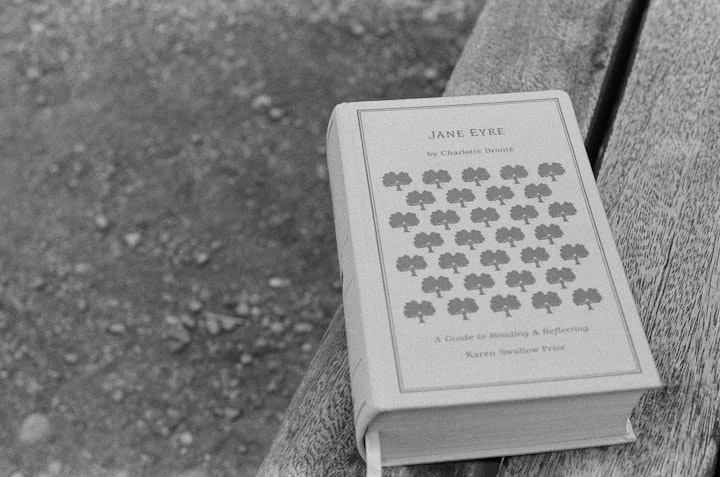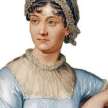Jane Eyre: The Almost Feminist Icon
An Essay On Why I Hate Jane Eyre

In highschool we had to read Jane Eyre, which I was originally extremely excited for because I love Jane Austen (obviously) and thought it would be similar. Oh, but how wrong I would be. The following is the resulting essay I wrote on the book:
Jane Eyre: The Almost Feminist Icon
Media, like literature, has always had problems with representation, especially when it comes to female characters and protagonists. In the early to mid 1800s there was a multitude of women writers that started writing their own female heroines. Jane Eyre by Charlotte Bronte is one of those novels, about a modern Victorian woman. The protagonist, Jane Eyre, is an educated, working woman, who does not always follow the traditional role women had in society. She is even considered a feminist icon. So why then, when searching for feminine role models from the early to mid nineteenth century, do other authors’ characters outshine a more modern character like Jane Eyre? Jane is a tolerable feminist icon, however she could reach another level of female heroine if the other female characters in the novel were more developed, if the men in the novel acted selflessly and if she did not end up in a very toxic relationship.
Jane interacts with many people throughout her story. There are a multitude of female characters, however Jane shines through as the hero (and favourite) in this novel because the other female characters are so poorly developed. Some of the first female characters that we are introduced to are Jane’s cousins Eliza and Georgiana. And for a book overloaded with descriptions, neither woman is described in detail until Jane sees them again when they are older, much later in the book. All we are offered is: “a heart… humbled by the consciousness of my physical inferiority to Eliza, John, and Georgiana.” (Bronte 9). Out of the three children, Jane in the opening of the novel, really only describes John Reed, the “man” of the house. The women characters do not even act for themselves, they are always acting on behalf of a male character; “discipline is administered to women by other women, as agents for men Bessie ...and Miss Abbot, acting on behalf of Mrs. Reed, who in turn is avenging her son, lock Jane up; at Lowood the kindly Miss Temple starves the girls because "she has to answer to Mr. Brocklehurst for all she does";35 at Thornfield Grace Poole is hired by Rochester as Bertha's jailor.”(Showalter). A lot of the female characters could be cut from the book without it affecting the story. Two of the most important female characters, Helen and Bertha, have small roles in comparison to Jane. This poor development leaves Jane as the only “strong” female character in the novel.
While the female characters lack dimension and depth, the male characters act only for their benefit or pleasure. Because of this Jane looks inherently good. From the very beginning of the novel Jane is ruthlessly bullied by her cousin John Reed. He is an awful man that ends up in debt, with poor health, associates with the wrong sorts of people, and he even went to jail. When he attacks Jane, he gives the impression that he enjoys using his power as a man and as the master of the house over her. He says “Now, I’ll teach you to rummage my bookshelves: for they are mine; all this house belongs to me, or will do in a few years,”(Bronte 13), right before he throws a book at Jane. Mr. Brocklehurst, the owner of Lowood school, is another example of a male character that is horrible to Jane. When we are first introduced to the character, Jane describes his appearance in an almost identical way to The Big Bad Wolf in Little Red Riding Hood. Mr. Brocklehurst is greedy and a hypocrite, although the school is in poor condition and he expects the girls there to live on very little, he himself is very rich, and his daughters live lavishly. When another character, St. John Rivers, is first introduced, he is a hero who saves Jane from death, and a handsome one too. But towards the end of the novel he is unable to accept Jane’s rejection of his proposal. He continues to suggest the union after Jane clearly expresses that she does not want to marry him and gives valid reasons why. Jane does start to realise that St. John is not as ‘perfect’ when she confesses to the readers, “St. John was a good man; but I began to feel he had spoken truth of himself when he said he was hard and cold.” (Bronte 393). Against the men in the novel, Jane looks like the poor, tortured, little girl that gets bullied by her family or school owner, or is stuck in an unfortunate situation with St. John. So comparatively when she perseveres through everything, she looks like the strong female hero. The worst thing Jane could have done was marry one of these generally terrible men.
Jane is a valid feminist icon, but she does not act as a good role model by marrying Rochester in the end of the novel. Rochester and Jane’s relationship was built on a mountain of lies and is one of the most toxic relationships in literature. A perfect example of Rochester’s power over Jane is during their conversation after its revealed that Rochester was married and hiding his wife:
“You make me a liar by such language… And what distortion in your judgement, what perversity in your ideas, is proved by your conduct! Is it better to drive a fellow-creature to despair than to transgress a mere human law…” This was true: while he spoke my very conscience and reason turned traitor against me, and charged me with crime in resisting. (Bronte 317)
In this quote it is clear that Rochester is trying to make Jane feel pity for him, and it seems to work. He manipulated her into confessing her feelings for him by lying about marrying Miss Ingram. Also, he was lying to everyone for years and holding his wife captive, hiding her away from the world, in a small little room in the attic. All Jane wants throughout her journey is to be loved, and Rochester is not worthy to love her, nor does he really show Jane a healthy relationship, which she deserves.
Jane may in fact be a strong female hero, but she could be better. If the other characters were more developed and acted selflessly instead of for the benefit of themselves only, and if in the end she did not return to the manipulative Rochester. Charlotte Bronte was definitely on the right track, giving Jane an untraditional story for women at that time. As Elaine Showlater says in a chapter from The Victorian Novel, “the heroine Jane Eyre achieves as full and healthy a womanhood as the feminine novelists could have imagined.” (Showalter). However nowadays, Jane cannot stand with other, greater, powerful heroines that appear in media and literature.
Works Cited
Brontë, Charlotte. Jane Eyre. Penguin Classic Deluxe Edition, 2009.
Showalter, Elaine. “Feminine Heroines: Charlotte Brontë and George Eliot.” Infobase, 2019.
About the Creator
Lauren Writes Austen
A dedcated creator to all things Jane Austen!






Comments
There are no comments for this story
Be the first to respond and start the conversation.